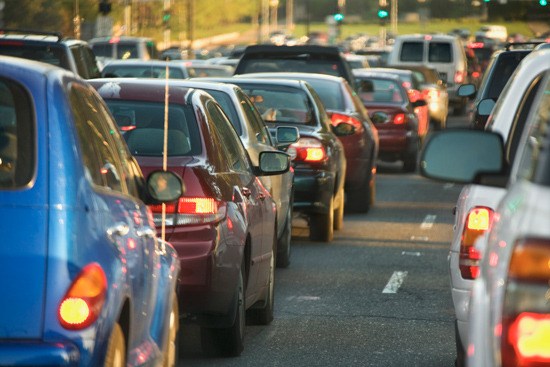Unlike the rush hour traffic drivers experience on Traffic Avenue in Sumner, the city’s plans for improving the state Route 410 overpass seem to be moving along smoothly.
In mid-January, the city put improving the highway overpass and the Traffic Avenue/Main Street intersection on the top of Sumner’s 2016 legislative goals, and since then, Sumner’s “hidden problem,” as Mayor Dave Enslow put it, has been getting noticed.
“Representative Stambaugh has made this a priority, and Rep. Stokesbary has also been very supportive,” said Carmen Palmer, Sumner’s communication’s director. “They’re trying to figure out what options there are as far as funding, given it’s a short session and given everything else going on with the state… But there’s lots of support, and we really appreciate that.”
Thousands of vehicles
According to the city, the traffic problem is multifaceted; Sumner’s population doubled since the overpass was built in 1967. Currently, more than 30,000 cars use the intersection and overpass every day, along with 3,000 freight trucks.
Traffic on SR 410 also contributes to the problem – the city says the highway is congested about five hours a day.
And according to the DOT’s 2014 annual traffic report, the half-mile stretch of SR 410 that goes from the Puyallup River to past the East Main Ave ramps receives the most traffic on that highway.
On average, 71,000 vehicles drive past milepost 9.02, a third of a mile northwest of Sumner’s highway overpass, on a daily basis.
Milepost 9.53, located right after the ramp to East Main Avenue, has a daily average of 61,000 vehicles.
Milepost 10.12, located right before the SR 162 ramps, has an average of 60,000 vehicles pass it daily, making it the third most-traveled portion of the highway.
3-year plan
Starting this spring, Sumner plans to apply for funding in order to start the project design and environmental permitting process.
The cost for the design and engineering is estimated to be $2.2 million.
”The ideal scenario is to get $300,000 from the state to leverage a grant from the Puget Sound Regional Council that we would apply for this spring to do the design work,” Palmer said.
If the city secures state funding by the time the legislative session ends on March 10, the plan is to ask the Puget Sound Regional Council for $1.65 million to cover the bulk of the design costs.
The city also hopes that Sound Transit will kick in around $100,000 because the company plans to build a 500 stall garage in the area, but according to Palmer, that project is contingent on the interchange being improved.
Other sources of funding include local support from other cities and private companies for around $150,000 and a grant match for another $550,000.
According to the city, it’s important to secure funding for design planning and permitting this year because the Puget Sound Regional Council and Transportation Improvement Board make grants available every two years.
This means if the city misses the 2018 window for construction planning, it could be a while before any improvements are made.
Current projections estimate construction will cost $14.7 million.
Ideal funding situations involve the city securing $10.7 million in grants and the legislature help cover the remaining $4 million shortfall.
Use #SumTraffic on Twitter to let your city know about your traffic problems in Sumner.


